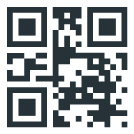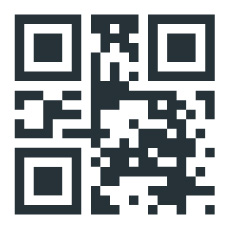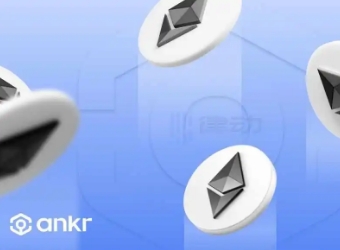The Rust programming language has many significant advantages over existing programming languages. It is one of the most popular programming languages for blockchain developers. Rust provides tools for seamlessly developing secure applications. In additio
The Rust programming language has many significant advantages over existing programming languages. It is one of the most popular programming languages for blockchain developers. Rust provides tools for seamlessly developing secure applications. In addition, Rust provides a direct opportunity to develop accurate documentation. The following is an introduction to some known blockchain projects using the Rust programming language.

1. Poka
This is a blockchain ecosystem based on smart contracts, which has the advantage of interoperability with the web3 trend. Interoperability in Polkadot realizes the convenience of cross chain data transmission by using an innovative mechanism called "parallel chain". It can simplify interoperability with different blockchain networks while ensuring security and scalability. Polkadot is an ideal example of the importance of the Rust programming language to blockchain developers, and it has a unique mechanism to prove the consistency of nomination interests. The blockchain also uses Rust to reduce the threshold for developers to enter the blockchain and web3 ecosystem.
Polkadot's architecture includes three different elements: parallel chain, parallel thread and relay chain. The relay chain is responsible for the connection between all chains running on Polkadot and dApps. At the same time, the parallel chain works as an autonomous chain with different rules and parameters, and runs in parallel with the relay chain.
Parallel chains must be sold by auction and may require projects to integrate local point tokens. Subsequently, parathreads can also be used as temporary hosts of dApps without token binding or auction. DOT token is the main accounting unit and exchange medium of dApps in Polkadot ecosystem. In addition, tokens also play an important role in the governance mechanism of Boca blockchain.
Polkadot has public chain, private chain, alliance chain and decentralized oracle. The Polkadot team uses the Rust programming language as well as C++, JavaScript, and Go. However, the network can gradually increase transaction throughput, thus paving the way for Rust's rule.
2、Elrond
Elrond is a huge blockchain network, tailored for blockchain developers and enterprises. Blockchain provides a wide range of use cases for serving the web3 community and other industries, because they provide lower transaction costs and better security. In addition, compared with the traditional blockchain network, Elrond blockchain network also ensures a higher speed of facilities. Obviously, it can support the transaction throughput of 15000 transactions per second.
Elrond features cross chain interoperability and is customized for easy expansion. It can achieve the same goal by using new sharding mechanism and verifier structure. On the other hand, it uses EGLD tokens in the form of major assets in the entire Elrond ecosystem. When users interact with Elrond's dApps, they can rely on EGLD tokens as a way to pay for gas. In addition, EGLD is also an important aspect of Elrond blockchain's security interest proof or SPoS consensus mechanism. Elrond's unique consensus mechanism has a triple node architecture, including verifiers, observers and fishermen in different roles.
The unique SPoS consensus mechanism proves the importance and advantages of the Rust programming language for blockchain development. The verifier is the main node in the three node architecture of the SPoS consensus mechanism. The basic role of the verifier is to mark local tokens and verify transactions for rewards and incentives.
The observer, as a passive node, reads and broadcasts data on the network without pledge or earning remuneration. Fisherman nodes are a significant highlight in the Elrond blockchain consensus mechanism, because they can challenge block data after the verification process. Fisherman nodes can be rewarded according to their skills in identifying bad actors in Elrond blockchain network.
3. Solana
Solana is one of the most popular blockchain networks in the web3 field, with the fastest growth rate. The local token SOL plays a crucial role in providing fuel for Solana ecosystem, and it is also the exchange medium for different dApps developed on Solana blockchain. In addition, SOL tokens are also an important requirement to support platform governance, and enable token holders to express their votes on important proposals related to network modification.
Solana blockchain also claims that it has an amazing transaction throughput of more than 60000 transactions per second. At the same time, Solana's average transaction fee is as low as 0.01 dollars. In addition, while providing scalability, Solana ensures appropriate security and decentralization. Most importantly, the Solana network can also achieve scalability without requiring a Layer 2 solution.
Another notable highlight is the timestamp mechanism, which makes Solana the first candidate on the list of blockchains using the Rust programming language. The unique history of the PoH timestamp mechanism proves that the delay is reduced by ensuring that a timestamp is added before the PoS consensus mechanism of the BFT tower.
4. Approximate agreement
Near Protocol is another excellent example of blockchain using the Rust programming language. It is also one of the popular smart contract blockchain networks, with special emphasis on community-based data storage. It uses the sharding mechanism to divide the blockchain network data into multiple localized data segments, thus obtaining multiple advantages.
Some outstanding advantages of the Rust programming language on the Near protocol for blockchain developers can show how it has gained great popularity in the past few years. It ensures to reduce bottlenecks, improve transaction throughput and reduce transaction costs, thus providing one of the fastest blockchain networks.
Obviously, the Near protocol can handle about 100000 transactions per second, verifying its scalability potential in emerging web3 technologies. The Near protocol also uses human readable wallet addresses instead of long strings of addresses. In addition, the near protocol also provides an Ethereum bridge for flexible exchange of assets between chains. Aurora, a native EVM compatible layer 2 extension solution, also makes the Near protocol a promising example of the Rust programming language.
5. Super ledger sawtooth
Hyperledger Sawtooth is also another top-level example of blockchain development using the Rust programming language, with multiple benefits. It is an open source blockchain, suitable for the development, deployment and operation of distributed ledgers. Most importantly, the platform can provide a modular framework through the development of customized blockchain networks.
Hyperledger Sawtooth can also help to update the sharing status between parties related to the consensus mechanism based on transactions. Although blockchain has developed the main part of its initial architecture on Python, Hyperledger sawtooth has switched to Rust. Developers have better control over their code and flexibility in development. In addition, by rewriting the blockchain code base in Rust, Rust also provides better accuracy and effective identification of possible errors.
conclusion
The detailed outline of the top blockchain using the Rust programming language provides a credible impression of its potential. For reasonable reasons, Rust has achieved amazing popularity in a short time. For example, it appears in the form of compiled language, thus reducing the burden on developers. In addition, it provides greater flexibility in code documentation while ensuring control over memory management. Effective identification of errors can also ensure better results of blockchain development projects. The low entry threshold is also an important highlight of the Rust programming language and its popularity.
















 Tue, 18 Apr 2023
Tue, 18 Apr 2023
